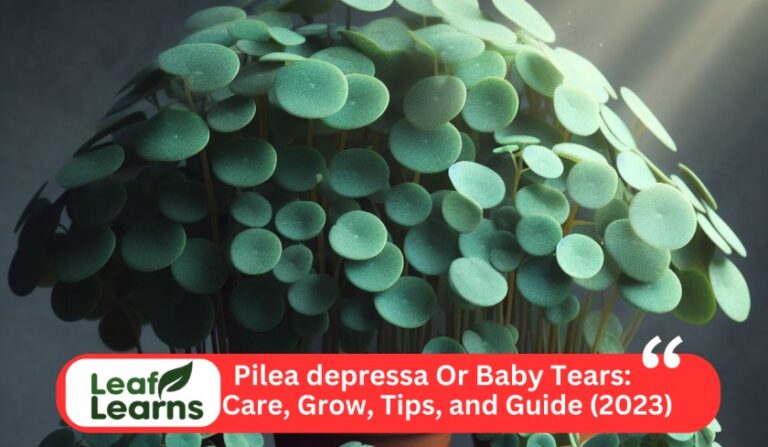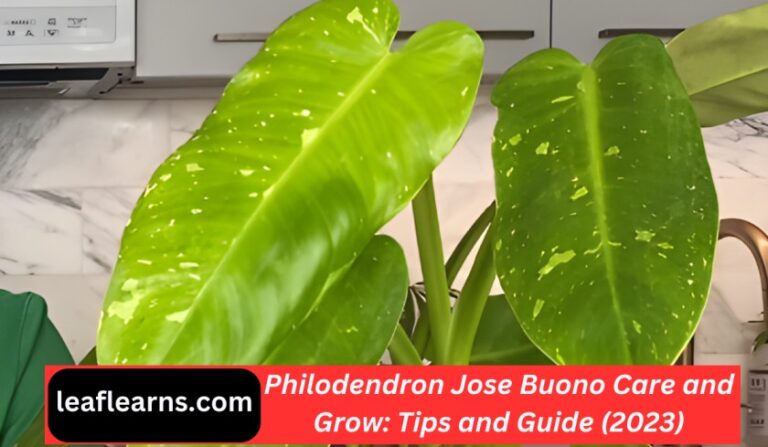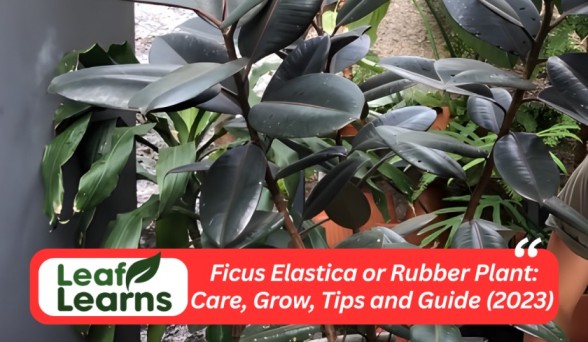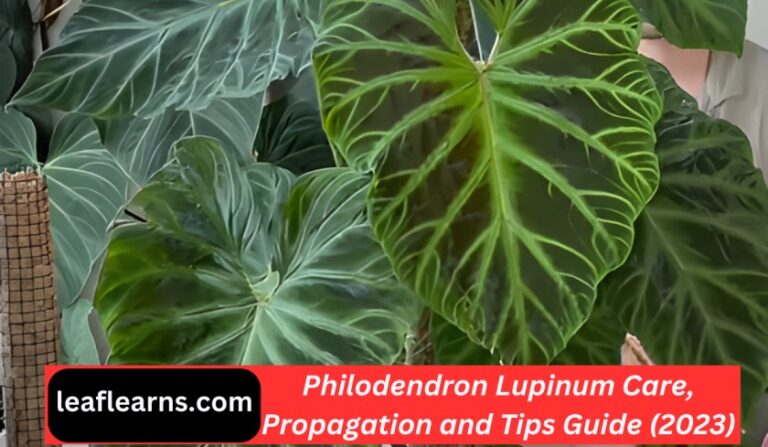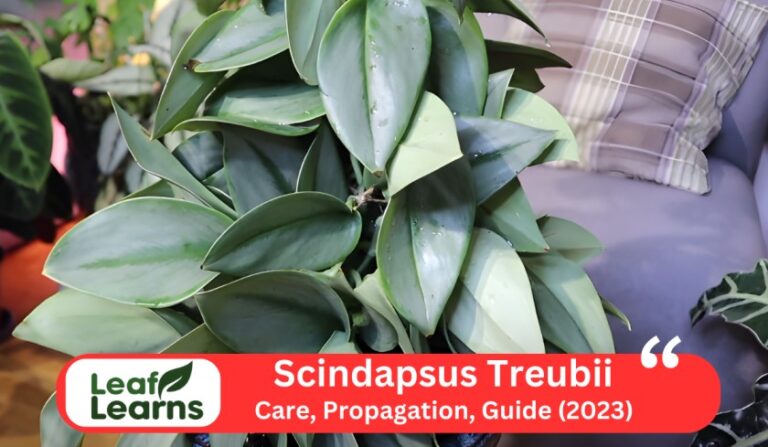How to Propagate Rhaphidophora Tetrasperma: Monstera Minima
You may Propagate Rhaphidophora Tetrasperma, a common houseplant famous for its attractive leaves, by taking stem cuttings or air layering. While there are some inherent variations in leaf size and form, unique established kinds are rare. The health of the plant may be affected by common pests such as mealybugs, aphids, and spider mites.
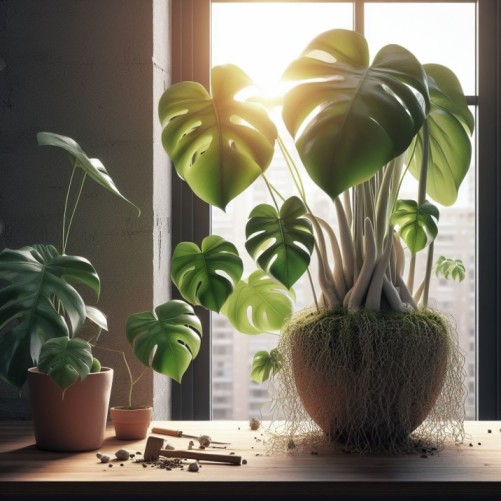
In addition, Rhaphidophora Tetrasperma may have problems including disappearing leaves and root rot. Despite these challenges, those who grow indoors love the plant for its unique look and easy of maintenance.
It is becoming more and more popular in home design since it can survive in low light and has amazing green leaves that give off a green, tropical impression. In This article I explain you How to Grow Rhaphidophora Tetrasperma Plant:
| Scientific Name | Rhaphidophora Tetrasperma |
| Propagation | Stem Cutting, Air layering |
| Varieties | There are some variations in leaf shape and size, there are no distinct named varieties of Rhaphidophora tetrasperma |
| Pest | Spider mites, mealybugs, and aphids. |
| Disease | Yellowing leaves, Root rot |
Contents
- 1 How to Propagating Rhaphidophora Tetrasperma
- 2 How to Propagate Rhaphidophora Tetrasperma From Seed
- 3 How Fast does Rhaphidophora tetrasperma Grow
- 4 Underwatering
- 5 Overwatering
- 6 Monstera adansonii vs Rhaphidophora tetrasperma
- 7 Varieties/Types of Rhaphidophora tetrasperma
- 8 Exploring the Diversity and Care of Rhaphidophora Tetrasperma Varieties
- 9 FAQs
How to Propagating Rhaphidophora Tetrasperma
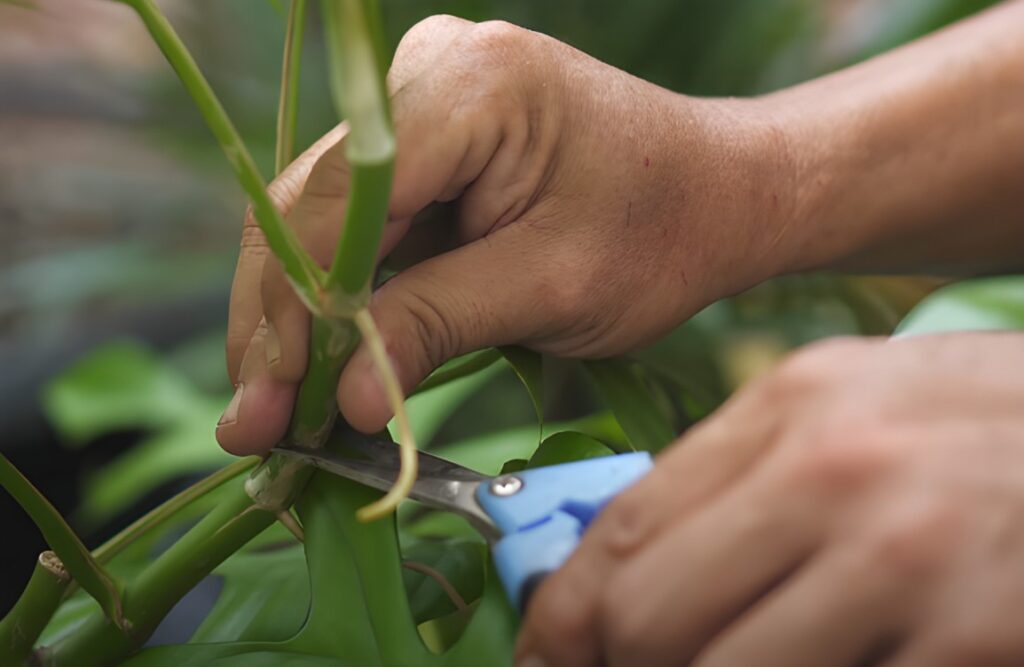
Stem Cuttings
Stem cuttings are one of the most common and effective methods for propagating Rhaphidophora tetrasperma:
Select a Healthy Stem: Pick a stem that is healthy and has at least one leaf node. The roots will grow from the node.
Take the Cutting: Just below a node, cut the stem with a clean, sharp pair of scissors or pruning shears. Ensure that the cutting is between 4 and 6 inches (10 to 15 cm) long.
Remove Lower Leaves: To reveal the node, clear away any branches or leaves from the lower portion of the cutting.
Let the Cutting Callus: Give the cut end of the stem a day or two to callus and dry. When inserted into the growth media, this helps prevent rotting.
Plant the Cutting: The cutting can either be planted in a container filled with water or in a potting mix that drains effectively. Bury the node in the dirt if you’re planting in soil, and keep the cutting upright. Submerge the node and retain the cutting in an area with bright, indirect light if you’re propagating in water.
Provide Adequate Humidity: Cuttings of Rhaphidophora tetrasperma flourish from a humid atmosphere. By placing a plastic bag over the cutting or using a propagation box with a lid, you may make a miniature greenhouse.
Maintain Moisture: Keep the water or soil continuously damp but not soggy. When the top inch of soil seems dry, check on the cutting frequently and water it.
Root Development: Roots should begin to form in a matter of weeks to months. Gently pulling on the cutting will reveal whether roots are present if there is resistance.
Transplant: Take care of the cutting as you would a mature Rhaphidophora tetrasperma plant by transplanting it into a larger pot with ordinary potting soil once the cutting has grown roots that are several inches long.
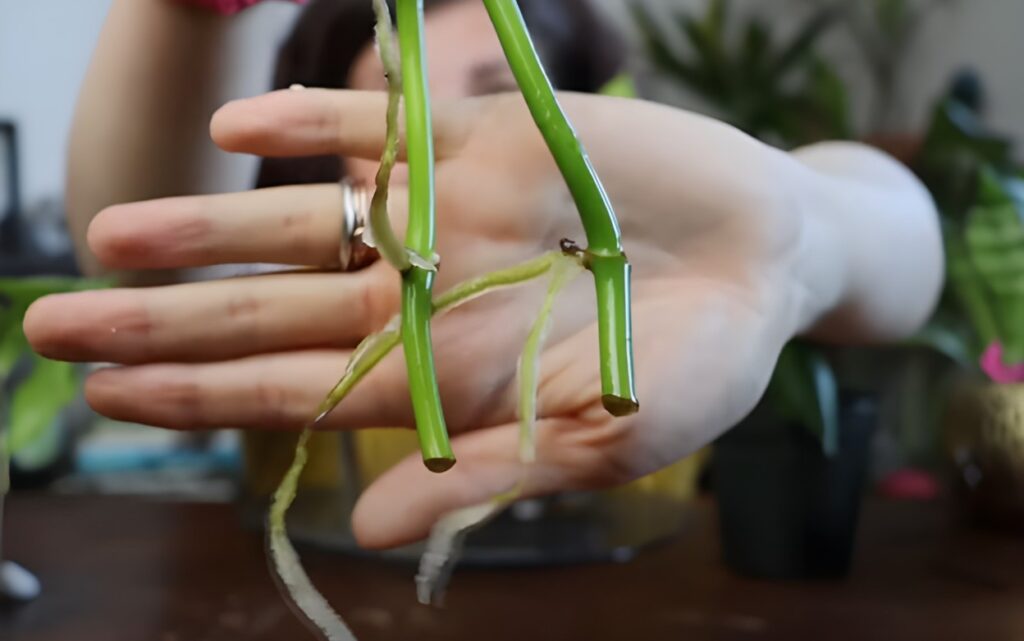
Air Layering
Air layering is another effective propagation method for Rhaphidophora tetrasperma, especially when dealing with a more mature plant:
Select a Healthy Branch: Choose a healthy, mature branch with a few leaves that you want to propagate.
Make an Incision: About 6 inches (15 cm) below the tip of the branch, make a little cut or remove a small bit of the bark.
Apply Rooting Hormone: Apply rooting hormone to the exposed region, if desired, to promote the growth of roots.
Wrap with Sphagnum Moss: To establish a humid climate, cover the exposed area with damp sphagnum moss with plastic wrap or a plastic bag.
Secure the Wrap: Secure the moss and plastic wrap with twine or a rubber band.
Root Development: from the moss, roots will develop from a few weeks to a few months. Gently pressing the moss will reveal whether roots have formed; it should feel hard and resistant
Cut and Pot: Cut the branch just below the moss-covered part after roots have grown, then plant the rooted portion in an appropriate container with potting soil.

Rhaphidophora tetrasperma in water
Choose Healthy Cuttings: Pick a stem cutting with at least one node that is healthy.
Cut and Prepare: Trim any lower leaves from the stem by cutting it using clean scissors just below a node.
Let It Callus: To avoid rotting, let the cut end callus and dry for a day.
Location in Water: Make sure the incision is well supported before submerging the node in a container of water.
Place the container in a location that has strong, indirect light.
Regular Water Changes Every few weeks, change the water to keep it fresh and avoid stagnation.
Follow Development: Roots will grow over time. When the cutting’s roots are several inches long, you can transplant it into the ground.
How to Propagate Rhaphidophora Tetrasperma From Seed
It is satisfying to grow Rhaphidophora Tetrasperma from seed. Obtain fresh seeds first. Place the seeds in a potting mix that drains well, being sure to gently cover the seeds.
Keep the environment warm and humid for germination. Provide continuous hydration and indirect light, but refrain from overwatering.
Your Rhaphidophora Tetrasperma will sprout and grow if you have patience. This technique provides a special and inexpensive approach to growing this popular houseplant.
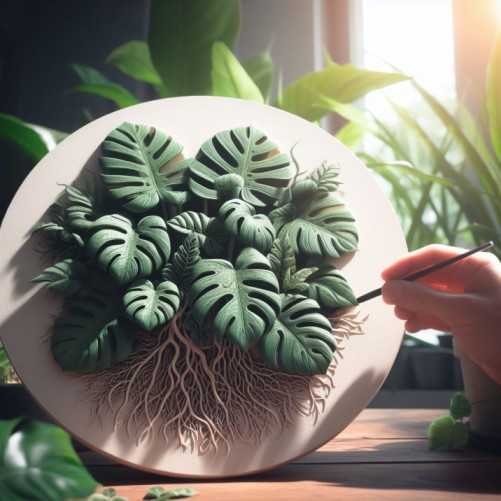
How Fast does Rhaphidophora tetrasperma Grow
In ideal circumstances, the rather quick-growing Rhaphidophora tetrasperma can increase in height by several inches to a foot or more per year. Although the growth rate may vary based on conditions like light, temperature, humidity, and maintenance, it is typically thought of as a houseplant that grows reasonably quickly.
Underwatering
Avoid submerging your Rhaphidophora Tetrasperma when caring for it. With insufficient moisture, plants may develop stunted growth and drooping leaves.
Make sure the ground is regularly damp but not soggy. Check the top inch of the soil frequently, and water as necessary. Your plant’s health and vigour depend on proper watering.
Overwatering
Rhaphidophora Tetrasperma may suffer if it is overwatered. Root rot results from roots not receiving enough oxygen in soil that is too wet.
This may cause leaf drop, yellowing, or wilting. Allow the top inch of soil to dry between waterings to avoid overwatering.
To prevent water accumulation, make sure the pot has enough drainage. A Rhaphidophora Tetrasperma may be kept healthy with proper watering.

Monstera adansonii vs Rhaphidophora tetrasperma
Growth Pattern:
Climbing vine with bigger, Swiss cheese-like leaves is called Monstera adansonii.
Compact, bushy vine with tiny, divided leaves is Rhaphidophora tetrasperma.
Leaf Appearance:
Round fenestrations (holes) can be seen on the leaves of Monstera adansonii.
Rhaphidophora Tetrasperma: The leaves feature distinct, slender, and holeless leaflets.
Care Complexity:
Monstera adansonii: Needs a little maintenance and lots of indirect light.
Rhaphidophora Tetrasperma: Tolerates lower light levels and is simpler to maintain
Size:
Monstera adansonii: Capable of expanding and becoming bigger.
Rhaphidophora Tetrasperma: Remains smaller and more controllable in size.
Overall:
Choose Monstera Adansonii if you are ready to put effort into maintenance and want bigger, stunning leaves.
Choose Rhaphidophora Tetrasperma if you’re looking for a simpler, lower-maintenance option in houseplants.

Varieties/Types of Rhaphidophora tetrasperma
Despite not having separate kinds, the common houseplant Rhaphidophora tetrasperma has natural variations in its leaf. The following characteristics make it easy to spot this plant’s endearing qualities:
Leaf Shapes: The morphology of the leaves can vary, ranging from being small and palmate to being deeply divided into four lobes and resembling tiny monstera leaves.
Leaf Size: Some Rhaphidophora tetrasperma have bigger or smaller leaves than others, hence leaf size can vary.
Coloration: Although the brilliant green tones of leaves often remain constant, certain varieties may show small hue fluctuations.
Aesthetic Appeal: This low-maintenance plant has a distinctive visual appeal from these slight variances, making it a lovely addition to any indoor garden.
So this is the all process of how to Propagate Rhaphidophora Tetrasperma.
Exploring the Diversity and Care of Rhaphidophora Tetrasperma Varieties
Rhaphidophora tetrasperma, commonly known as the variegated Rhaphidophora, comes in various forms. The large form of Rhaphidophora tetrasperma, often found in the wild, boasts an incredible diversity, from variegated Rhaphidophora tetrasperma aurea to the unique tetrasperma variegata.
When it comes to Rhaphidophora tetrasperma growth and care, understanding the variegated varieties is crucial. To care for your plant, follow some essential steps like proper light conditions to avoid yellowing leaves or leaf curling, maintaining the right humidity level, and using the appropriate soil mix.
While propagation is possible through air layering or stem cuttings, mastering the technique is essential for enthusiasts. In French-speaking regions, gaining knowledge about “rhaphidophora tetrasperma entretien” (care) and “bouture rhaphidophora tetrasperma” (cutting) is essential for successful growth.
Whether you’re a newcomer or an experienced grower, exploring the vast world of Rhaphidophora tetrasperma is a rewarding journey.
FAQs
What is the length for a Rhaphidophora tetrasperma stem cutting?
The recommended length for a stem cutting is around 4 to 6 inches (10-15 cm).
How can you check for root development in a stem cutting?
By gently tugging on the cutting, you may determine whether roots have formed; resistance indicates the existence of roots.
What is air layering, and when is it a suitable propagation method for Rhaphidophora tetrasperma?
Making roots on an established branch is the process of air layering. It is appropriate for Rhaphidophora tetrasperma plants that are highly developed.
How should you water Rhaphidophora tetrasperma to avoid overwatering?
Water when the top inch of soil feels dry to prevent overwatering.


